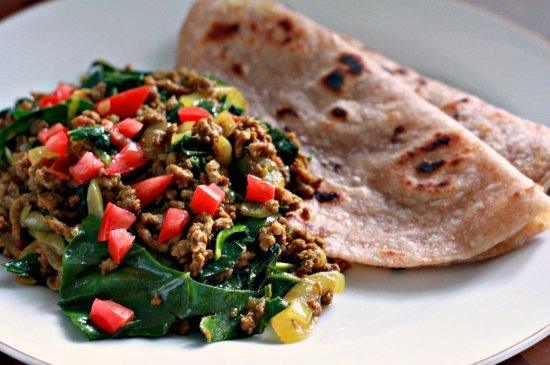In Kenyan cuisine, both chapati and ugali are staple foods that hold significant cultural and nutritional value. However, when dining out, you may notice that chapati often comes at a higher price than ugali in restaurants. This pricing disparity can be intriguing, especially given that both foods are commonly consumed across the country. To understand why chapati is more expensive than ugali in Kenyan restaurants, we need to explore the factors that influence cost, including ingredients, preparation time, cultural perceptions, and economic dynamics.
1. Ingredient Costs and Availability
One of the primary reasons for the price difference between chapati and ugali is the cost of ingredients. Chapati is made from wheat flour, which is typically more expensive than the maize flour used for ugali. Wheat is not as widely grown in Kenya as maize, and much of the wheat used in the country is imported, leading to higher costs. Additionally, chapati requires other ingredients such as cooking oil, salt, and sometimes butter or milk, further driving up the overall cost. In contrast, ugali, made from maize flour and water, has simpler and more affordable ingredients, making it less expensive to produce.
2. Preparation Time and Labor Intensity
Chapati is more labor-intensive to prepare compared to ugali. Making chapati involves kneading the dough, rolling it out into flat circles, and then frying each piece individually on a hot pan. This process requires skill, time, and attention to detail to ensure that the chapati is soft, fluffy, and evenly cooked. On the other hand, ugali is relatively straightforward to prepare; it involves boiling water, adding maize flour, and stirring until it reaches the desired consistency. The simplicity and speed of ugali preparation contribute to its lower cost in restaurants, while the time and effort required for chapati make it a pricier option.
3. Fuel and Energy Costs
The cooking methods for chapati and ugali also influence their respective prices. Preparing chapati typically requires more energy, as each piece is cooked individually on a stove or pan. This process consumes more fuel, whether it’s gas, electricity, or firewood, adding to the overall cost of producing chapati. In contrast, ugali is cooked in a single pot and requires less time and energy to prepare, resulting in lower fuel costs. Restaurants factor these energy costs into their pricing, contributing to the higher price of chapati compared to ugali.
4. Cultural Perceptions and Demand
Chapati is often perceived as a more premium or special food compared to ugali. While ugali is a daily staple for many Kenyans, chapati is often reserved for special occasions, celebrations, or as a treat. This perception of chapati as a special or luxurious dish influences its demand and pricing in restaurants. Diners may be willing to pay more for chapati because they associate it with a higher culinary experience, leading restaurants to price it accordingly. Ugali, being a more common and everyday food, is typically priced lower to reflect its widespread availability and consumption.
5. Portion Sizes and Serving Methods
The portion sizes and serving methods of chapati and ugali also play a role in their pricing. Ugali is usually served in larger portions because it is a filling and hearty dish, often acting as the main component of a meal. Chapati, on the other hand, is typically served in smaller quantities, often as an accompaniment to other dishes. The difference in portion sizes means that restaurants can charge more for chapati per piece, while ugali is priced more affordably to reflect its larger serving size.
6. Restaurant Overheads and Pricing Strategies
Restaurants have various overhead costs, including rent, wages, and utilities, which influence their pricing strategies. Given the labor-intensive nature of chapati preparation, restaurants may allocate more resources, such as skilled chefs and longer preparation times, to its production. To cover these additional costs, restaurants often price chapati higher than ugali. Additionally, restaurants may use chapati as a way to increase their profit margins, knowing that customers perceive it as a more premium option and are willing to pay a higher price for it.
7. Regional Variations and Supply Chains
The cost and availability of ingredients, particularly wheat, can vary across different regions of Kenya. In areas where wheat is less accessible, the price of chapati may be higher due to the additional costs associated with transporting and sourcing wheat flour. In contrast, maize, the primary ingredient for ugali, is more widely available across the country, leading to more stable and lower prices for ugali. The regional supply chain dynamics influence the pricing of both foods, with chapati often being more expensive in areas where wheat is not locally produced.
8. Influence of International Markets
The pricing of wheat flour, and consequently chapati, is also influenced by international markets. Since Kenya imports a significant portion of its wheat, fluctuations in global wheat prices can impact the cost of chapati in restaurants. Factors such as global demand, currency exchange rates, and international trade policies all play a role in determining the price of wheat, which in turn affects the price of chapati. Ugali, being primarily made from locally grown maize, is less susceptible to these international market dynamics, making its price more stable and affordable.
9. Consumer Preferences and Market Dynamics
Consumer preferences and market dynamics also contribute to the price difference between chapati and ugali. Restaurants often base their pricing on what consumers are willing to pay, and chapati is often seen as a more desirable option. This perception allows restaurants to charge a premium for chapati, especially in urban areas where consumers may have more disposable income and are willing to pay more for a meal that includes chapati. The demand for chapati in certain markets drives up its price, while ugali remains a more affordable option for the majority of consumers.
10. The Role of Tradition and Innovation
Finally, the role of tradition and innovation in Kenyan cuisine cannot be overlooked. Chapati, with its origins in Indian cuisine, has been embraced and adapted by Kenyan culture, becoming a beloved part of the national culinary landscape. Its preparation has remained relatively traditional, which adds to its perceived value and cost. Ugali, on the other hand, has remained a more straightforward and consistent dish, with little variation in its preparation. The blend of tradition and innovation surrounding chapati has helped maintain its status as a special and more expensive dish in restaurants.
Conclusion: The Multifaceted Nature of Food Pricing
The price difference between chapati and ugali in Kenyan restaurants is the result of a complex interplay of factors, including ingredient costs, preparation time, energy use, cultural perceptions, and market dynamics. While ugali remains an affordable staple for many, chapati is often seen as a more premium option, leading to its higher price. Understanding these factors provides insight into the broader economic and cultural context of Kenyan cuisine, where tradition, resource availability, and consumer preferences all play a role in shaping the dining experience.





